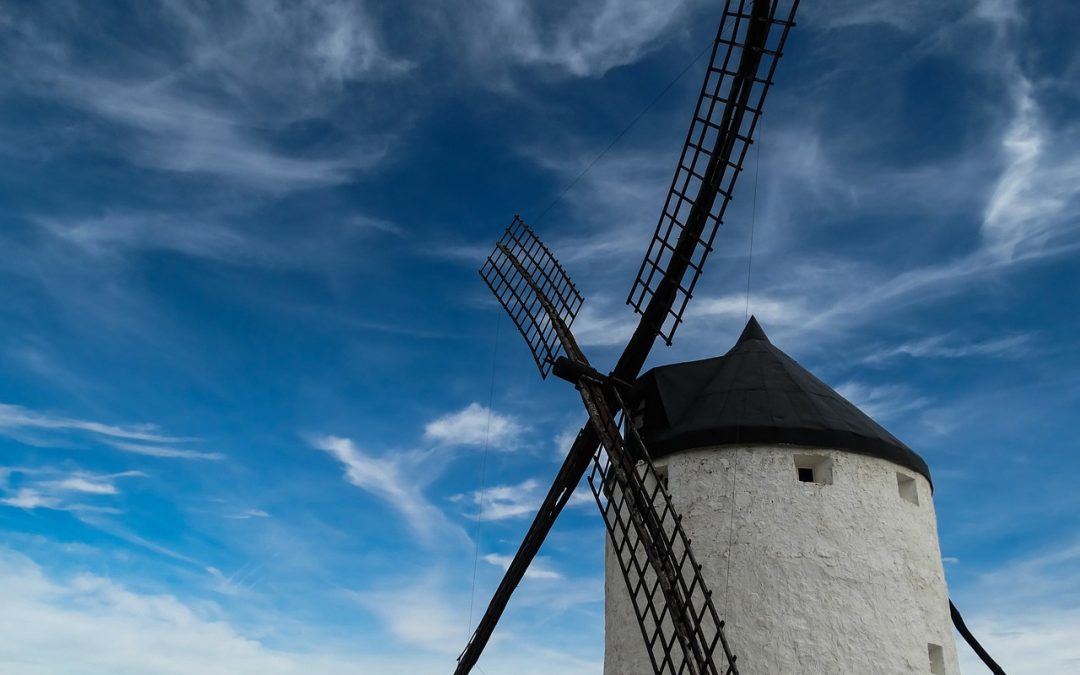Chasing Windmills

By Dr. Marcia Davis-Dawkins
I have often reminded myself that nothing happens in life without a reason and even when it seems odd at the time, later on in life as you are given a chance to think of the lesson/s learned from an encounter, the significance hits you when you have more wisdom and experience. Recently I decided to take a nature walk  and take care of my body on Earth Day. Whether you might see this has a mere coincidence or not, things just seemed to roll into place and as I walked and talked with a friend, and I realized that again, “nothing happens without a reason.” This time the friend encouraged me to watch a movie, which I promised to watch and I was true to my word. The movie entitled the The Boy Who Harnessed the Wind is based on the novel of that title, in which the protagonist and narrator, William Kamkwamba, are one and the same. In his memoir, a young Malawian man grows up in the rural village of Wimbe during the 2000 famines in Malawi. William has an incredible aptitude for science and engineering, though he is unable to stay in school due to a lack of funds. Self-motivated and resourceful, he finds books in his local library that allow him to learn about physics, electricity, and laborsaving inventions on his own. With the help of his friends, Gilbert and Geoffrey, William then builds a windmill so that his family can have free electricity that is not controlled by government blackouts. The windmill earns William the support of a Malawian professor, who helps William gain scholarships to school and a fellowship with TED Global that puts William in contact with other innovators and entrepreneurs across not the African continent, but the world. William embodies the values of hard-work, education, and helping others, maintaining an optimistic outlook on everything, despite the many troubles described in the book.
and take care of my body on Earth Day. Whether you might see this has a mere coincidence or not, things just seemed to roll into place and as I walked and talked with a friend, and I realized that again, “nothing happens without a reason.” This time the friend encouraged me to watch a movie, which I promised to watch and I was true to my word. The movie entitled the The Boy Who Harnessed the Wind is based on the novel of that title, in which the protagonist and narrator, William Kamkwamba, are one and the same. In his memoir, a young Malawian man grows up in the rural village of Wimbe during the 2000 famines in Malawi. William has an incredible aptitude for science and engineering, though he is unable to stay in school due to a lack of funds. Self-motivated and resourceful, he finds books in his local library that allow him to learn about physics, electricity, and laborsaving inventions on his own. With the help of his friends, Gilbert and Geoffrey, William then builds a windmill so that his family can have free electricity that is not controlled by government blackouts. The windmill earns William the support of a Malawian professor, who helps William gain scholarships to school and a fellowship with TED Global that puts William in contact with other innovators and entrepreneurs across not the African continent, but the world. William embodies the values of hard-work, education, and helping others, maintaining an optimistic outlook on everything, despite the many troubles described in the book.
After I watched the movie I thought about how inspirational it was and especially because it was educational based, I couldn’t help but wonder how much influence we are as educators to help students live out their dreams. In the story, William’s father didn’t think he was capable of making the windmill even though he had made a “mock model” of it. His father thought it was simply a toy and when William asked for the use of his father’s bike to help to make the windmill, William was told to go help him in the field and to stop chasing a dream that would essentially take him nowhere. In essence, he sent him on his way and said he was wasting his time.
The school system also didn’t believe in William and had suspended him from school because his family was unable to pay his school fee. One of the things that resonated with me after watching the movie was how much some of our students take going to school for granted. Some of the students aren’t even aware of the fact that in some parts of the United States, or other parts of the world, because of poverty or other socioeconomic issues students/children aren’t able to attend school. Yet, they have the opportunities and are often wasting their time and energy. Then again, are they aware of how others in history fought to get them the opportunity to attend school? It also begs the question, are we teaching students their history? It is easy to say that it is not the educators’ job to teach the students their history, but to place it in the hands of their parents, but are the parents aware or are they qualified to do so? Yes, I know we have to wear many hats, but as we try to educate the whole student, I firmly believe that this is part of our charge. I also say that if we don’t know enough about the topic for instance, then we could read more about it so we can share. Essentially, since we are supposed to be life- long learners, then we can learn as we teach – which in turn, can make our teaching fresh.
In the book, William said and I quote, “I’m ashamed to see this school broken in such fashion. We should tear the whole place down and start from scratch, build it again strong and proud! Teachers’ houses also need to be shipshape, and students need new desks and books!”
The aforementioned book reminded me of another somewhat similar story, Don Quixote written in the late 16th century. In that selection, the character of Quixote is a 50ish rather myopic man, seemingly deranged and obsessed with tales of knighthood, fantasy and chivalry. He battles illusory monsters, which are actually windmills. The stories are comparable in that perception is everything. The way we see the world is how it shall be. Both main characters accomplished what they set out to do because they believed that they could! If we choose to see good, there will be good. Great changes in life don’t happen by settling for what is in front of us. They happen by looking at the world in unique ways.
 It sent home another message that I had read from Hebrews 13:16, (NIV) “Do not neglect to do good and to share what you have, for such sacrifices are pleasing to God.” This further encouraged me to put into action my dream of helping students from my homeland Jamaica, who are less fortunate and very talented, and would also appreciate the extra assistance to push them further so they can run with their dreams, go on and, who knows, maybe build windmills like William. Give the students an opportunity to, as they say, “Chase windmills,” the glorious journey of chasing ideas bigger than themselves and remaining optimistic in the face of cynicism!
It sent home another message that I had read from Hebrews 13:16, (NIV) “Do not neglect to do good and to share what you have, for such sacrifices are pleasing to God.” This further encouraged me to put into action my dream of helping students from my homeland Jamaica, who are less fortunate and very talented, and would also appreciate the extra assistance to push them further so they can run with their dreams, go on and, who knows, maybe build windmills like William. Give the students an opportunity to, as they say, “Chase windmills,” the glorious journey of chasing ideas bigger than themselves and remaining optimistic in the face of cynicism!
Work Cited
Mueller, B. (2019). “The Boy Who Harnessed the Wind, Plot Summary.” Lit Charts.LitCharts LLC, June 2017. Web. 21 Apr 2019.


We should all strive to be life-long learners, to know our rich history as a people and as a nation and share it with our children. I believe it helps to foster a healthy respect for others and develops pathways to build a better tomorrow for everyone.
Thanks so much for visiting the sight and for your insightful comment. It is really appreciated.